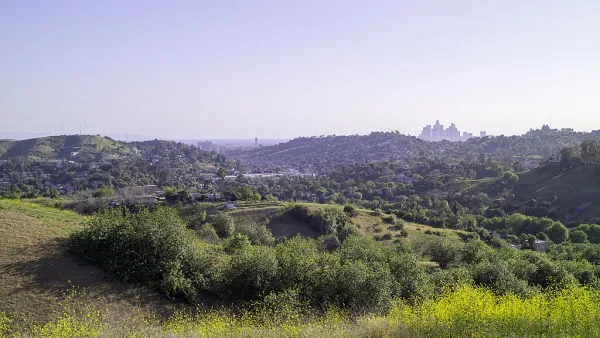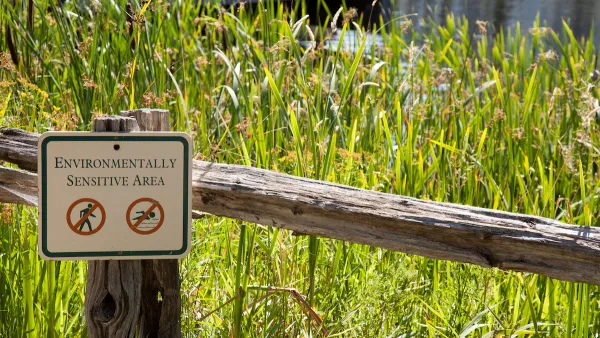A new study mandated by the federal Resources Planning Act predicts that developed land in the U.S. will increase by 41 percent in the next five decades. Such development could have dramatic impacts on our natural resources and ecosystems.
Kaid Benfield discusses the findings of a study conducted by scientists at the US Forest Service and partners at universities, non-profits and other agencies. Their predictions show that the consequences of continued expansion of urban and developed land could have monumental impacts on our natural resources, including the loss of up to 34 million acres of forested land and increased water shortages.
According to Benfield, key themes from the findings include:
- Land development will continue to threaten the integrity of natural ecosystems;
- Climate change will alter natural ecosystems and affect their ability to provide goods and services;
- Competition for goods and services from natural ecosystems will increase;
- Geographic variation will require regional and local strategies to address resource management issues.
"As troubling as the trends and forecasts are for forests and farms lost to development, it does not have to be this way. We need to stop the madness. Market preferences are now trending in favor of closer-in, more walkable living. Let’s build future development that responds, conserving the landscape in the process," concludes Benfield, who details some tactics available for achieving such a goal.
Hazel Borys sounds a similar note in discussing the 41 million acres of rural land that the US lost to development from 1982 to 2007, the need to reduce this rate of development, and what several ogranizations and local governments are doing to preserve rural lands.
FULL STORY: Suburban sprawl could destroy up to 34 million acres of forests, says new study

National Parks Layoffs Will Cause Communities to Lose Billions
Thousands of essential park workers were laid off this week, just before the busy spring break season.

Retro-silient?: America’s First “Eco-burb,” The Woodlands Turns 50
A master-planned community north of Houston offers lessons on green infrastructure and resilient design, but falls short of its founder’s lofty affordability and walkability goals.

Delivering for America Plan Will Downgrade Mail Service in at Least 49.5 Percent of Zip Codes
Republican and Democrat lawmakers criticize the plan for its disproportionate negative impact on rural communities.

Test News Post 1
This is a summary

Test News Headline 46
Test for the image on the front page.

Balancing Bombs and Butterflies: How the National Guard Protects a Rare Species
The National Guard at Fort Indiantown Gap uses GIS technology and land management strategies to balance military training with conservation efforts, ensuring the survival of the rare eastern regal fritillary butterfly.
Urban Design for Planners 1: Software Tools
This six-course series explores essential urban design concepts using open source software and equips planners with the tools they need to participate fully in the urban design process.
Planning for Universal Design
Learn the tools for implementing Universal Design in planning regulations.
EMC Planning Group, Inc.
Planetizen
Planetizen
Mpact (formerly Rail~Volution)
Great Falls Development Authority, Inc.
HUDs Office of Policy Development and Research
NYU Wagner Graduate School of Public Service





























